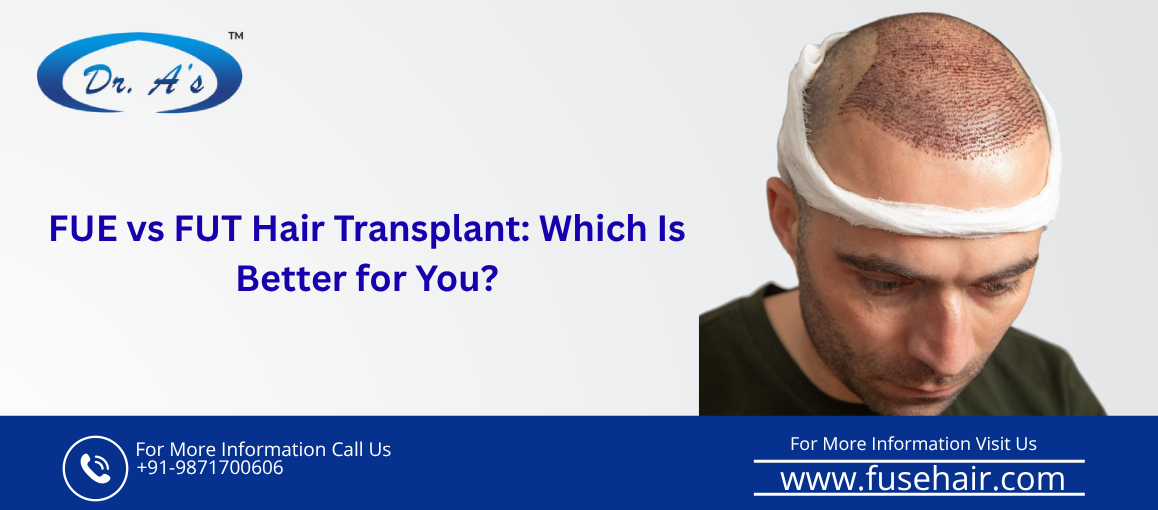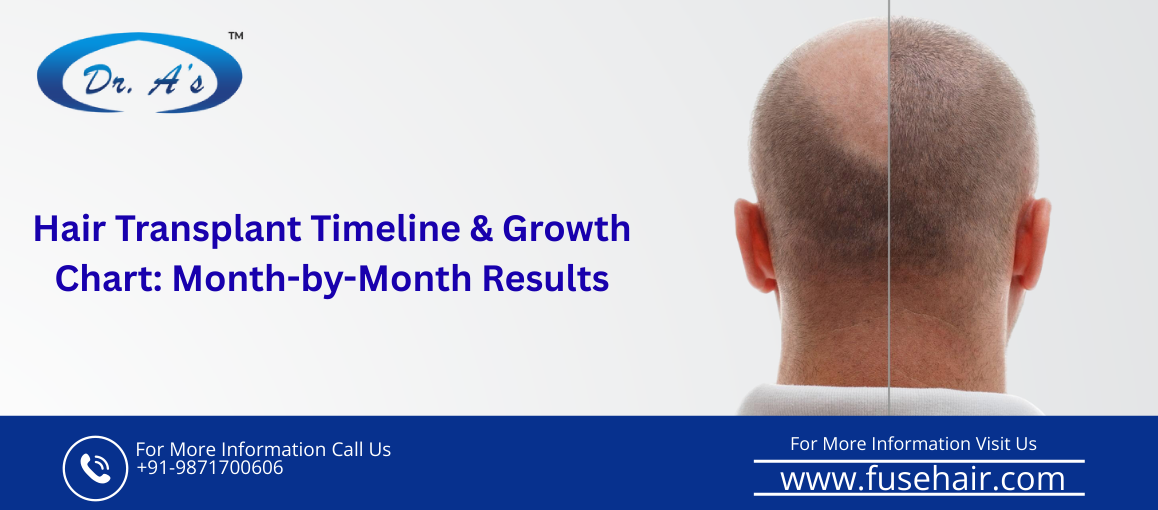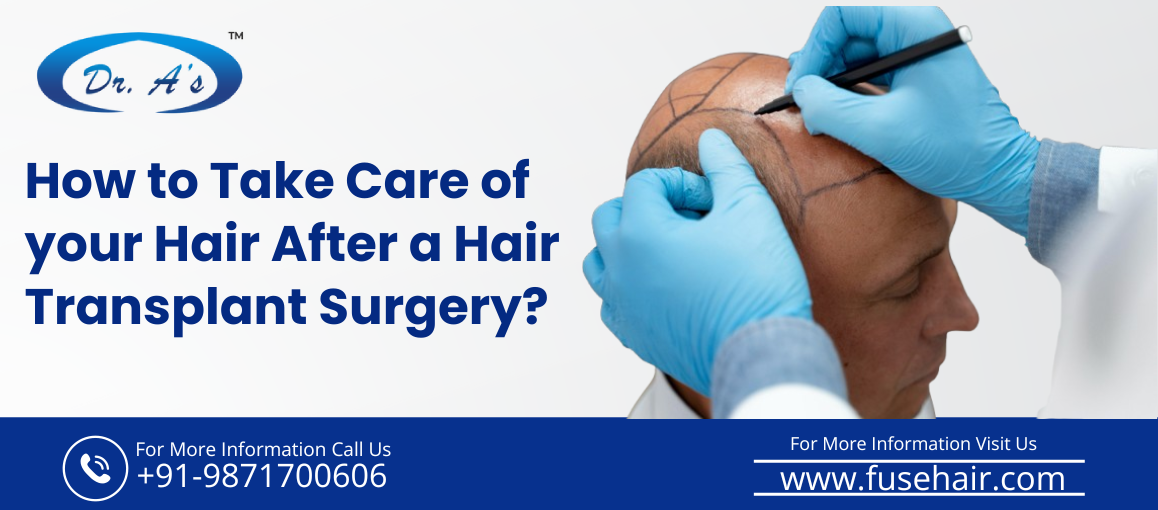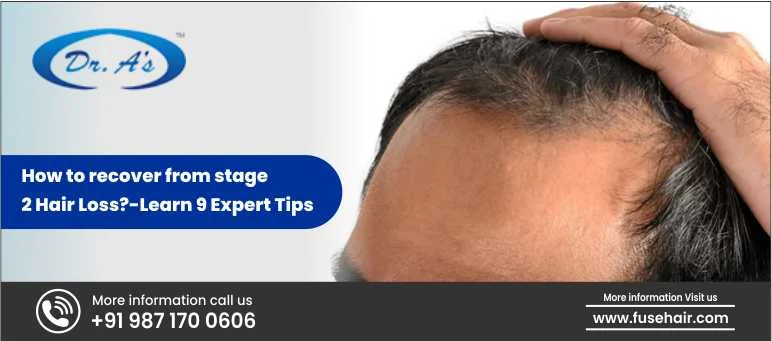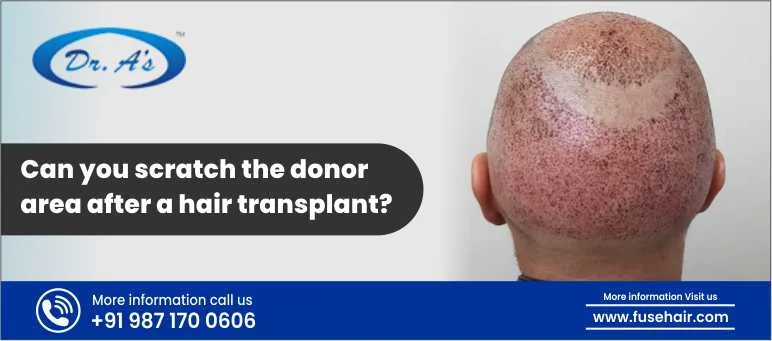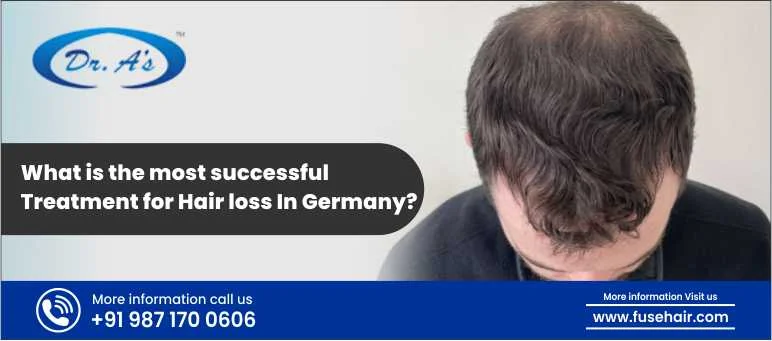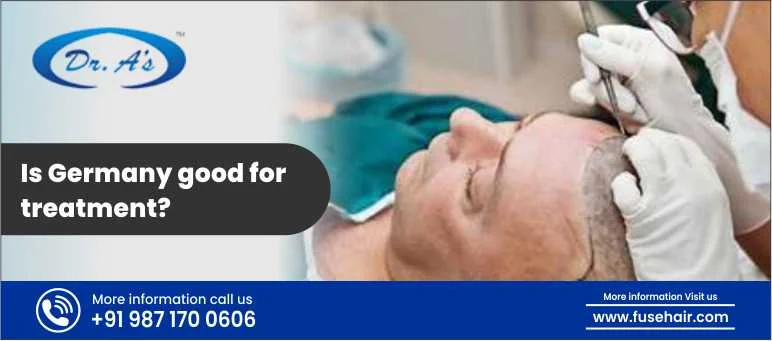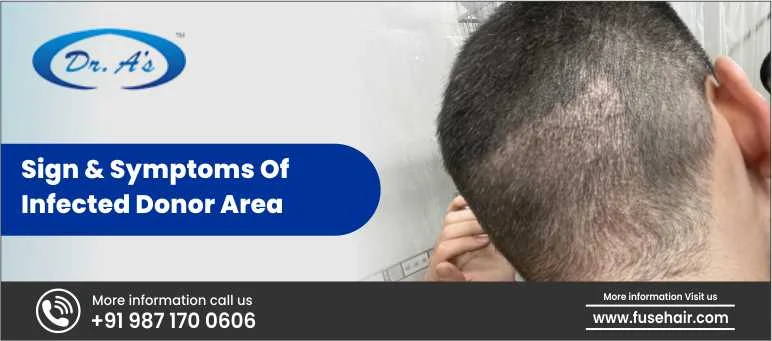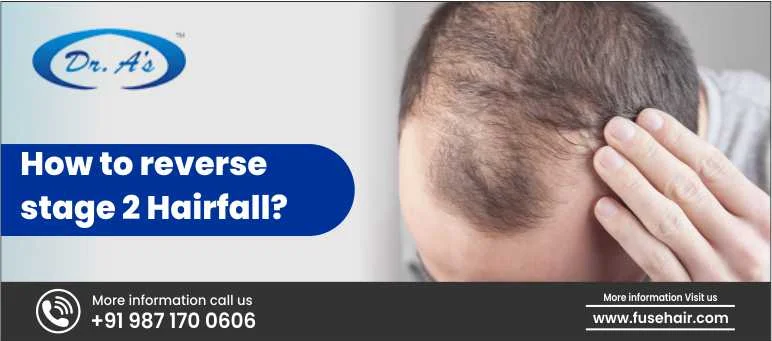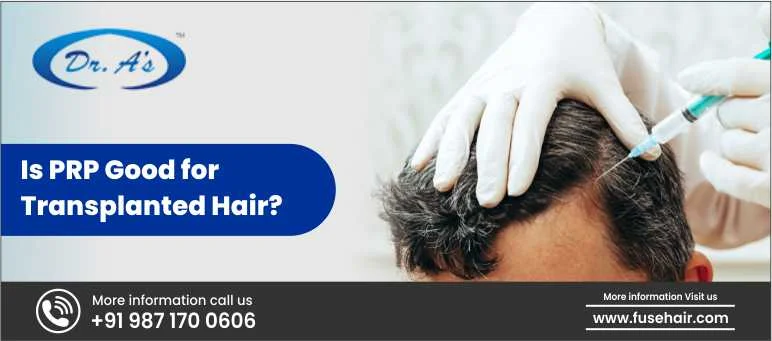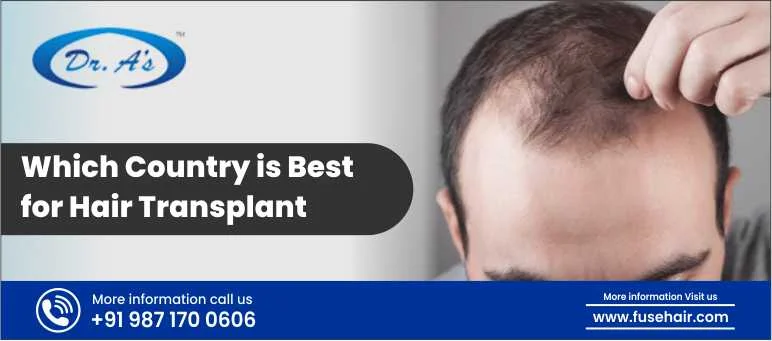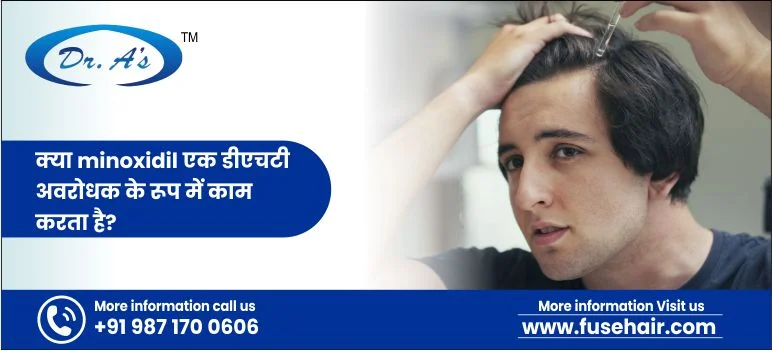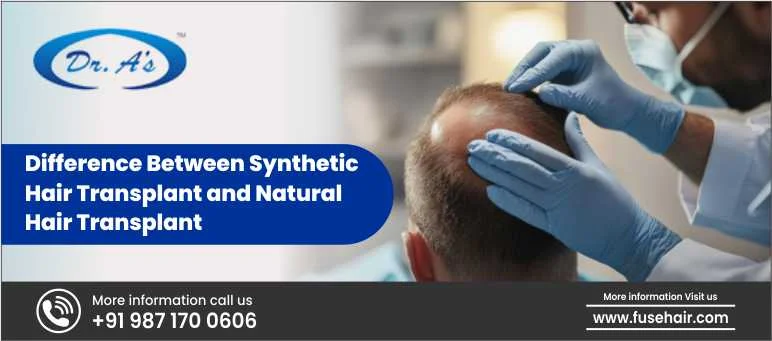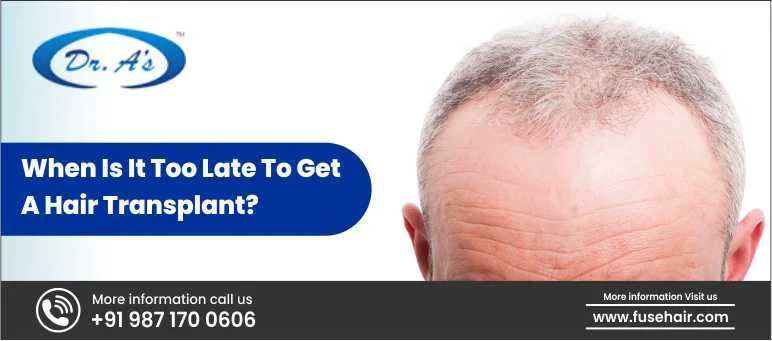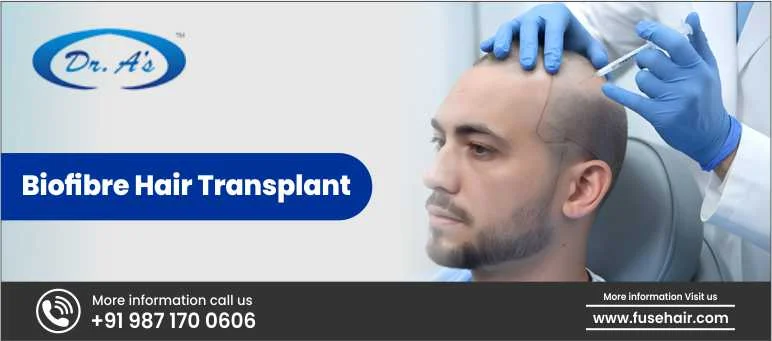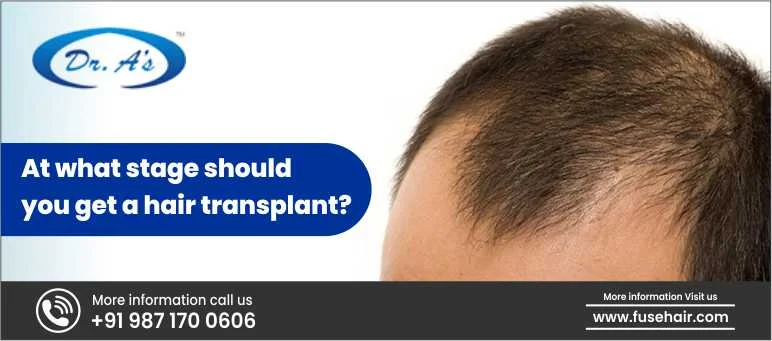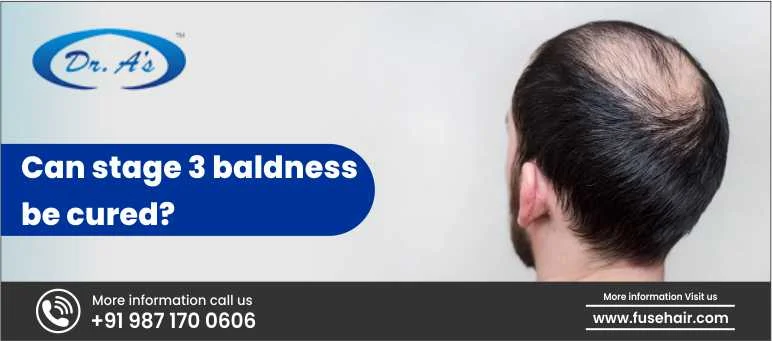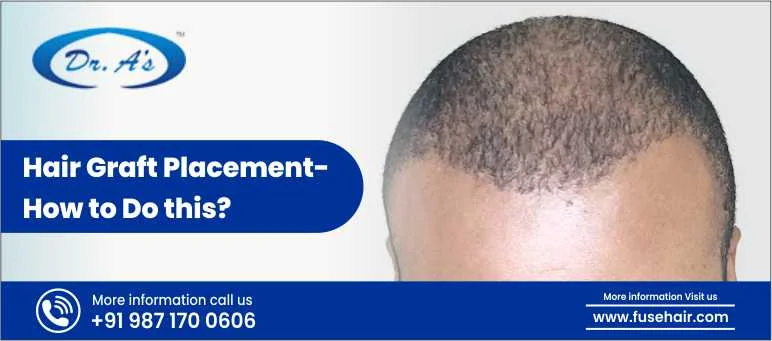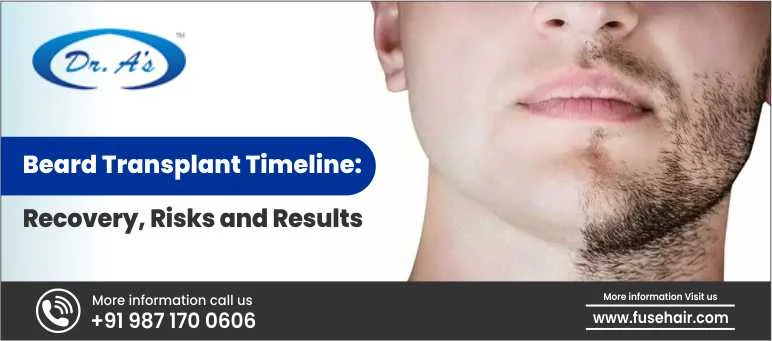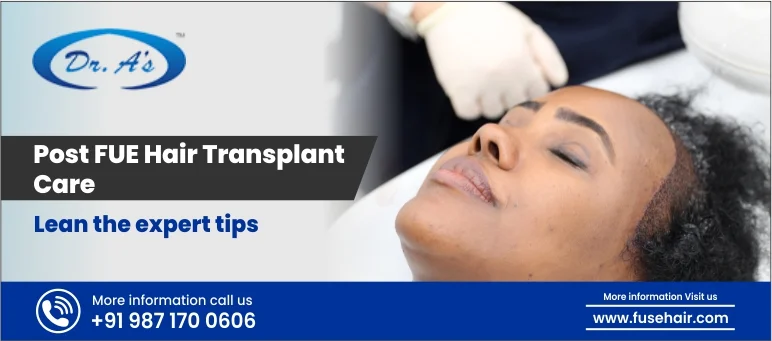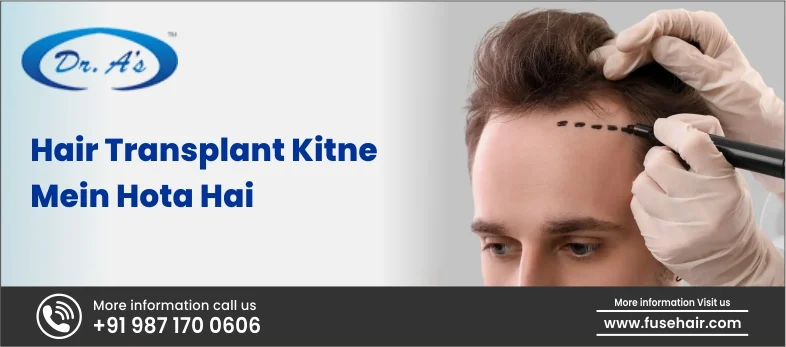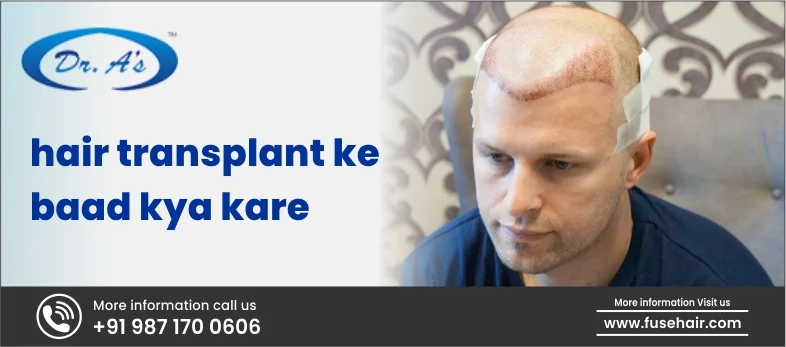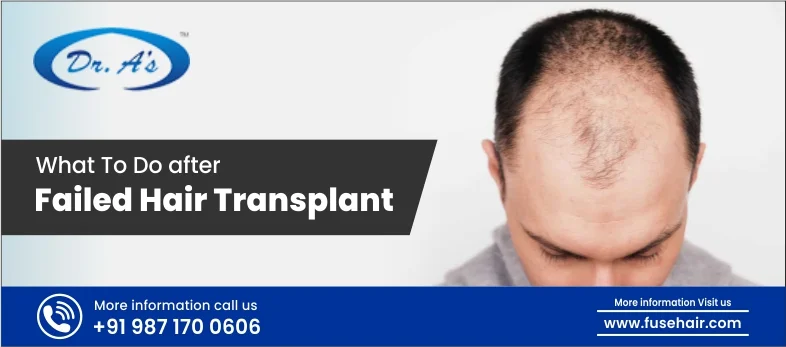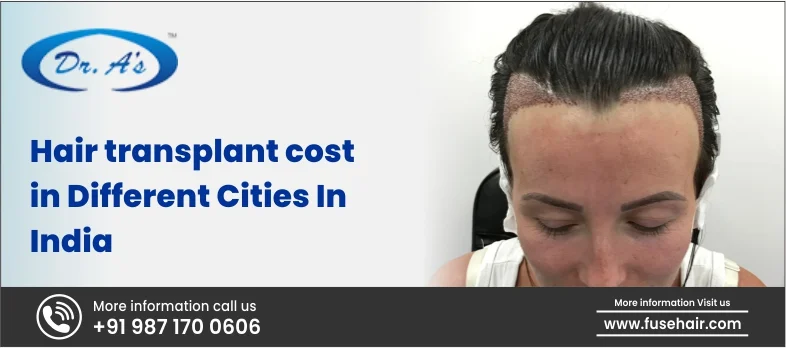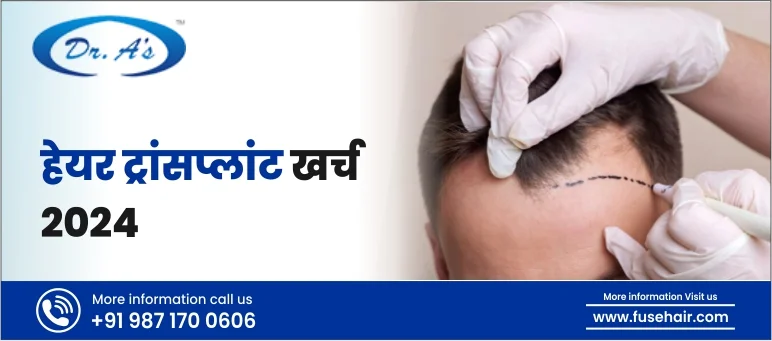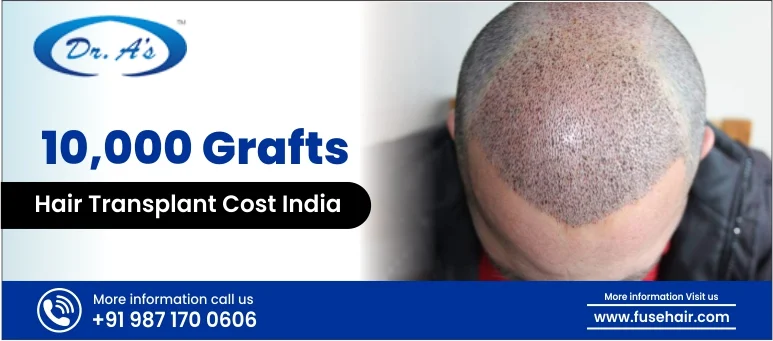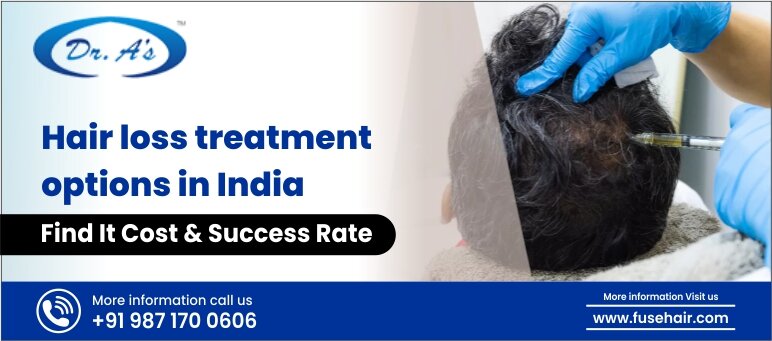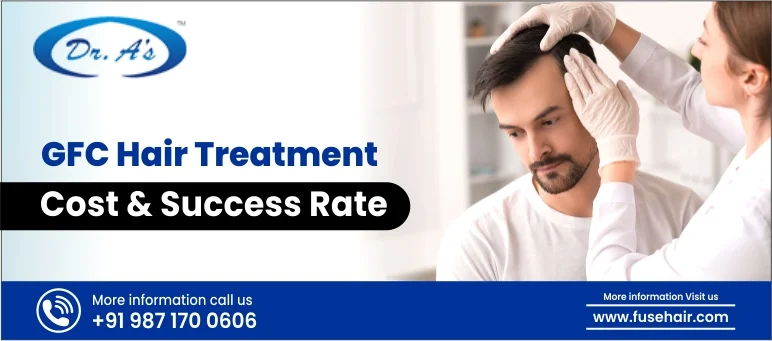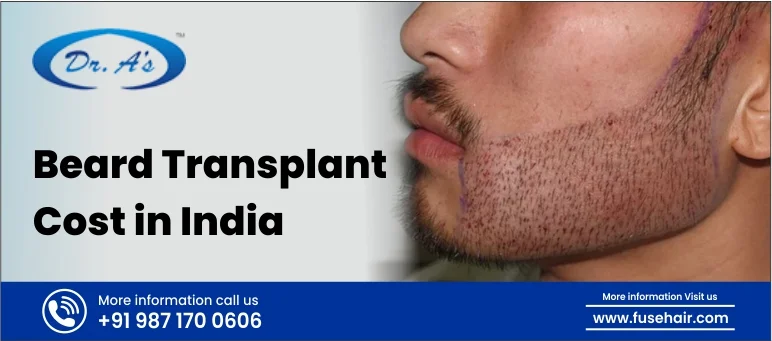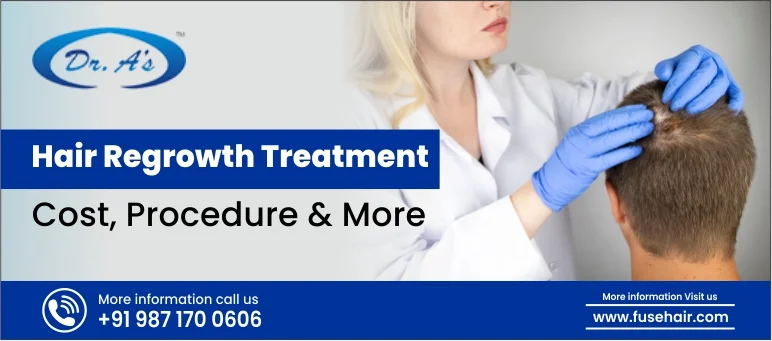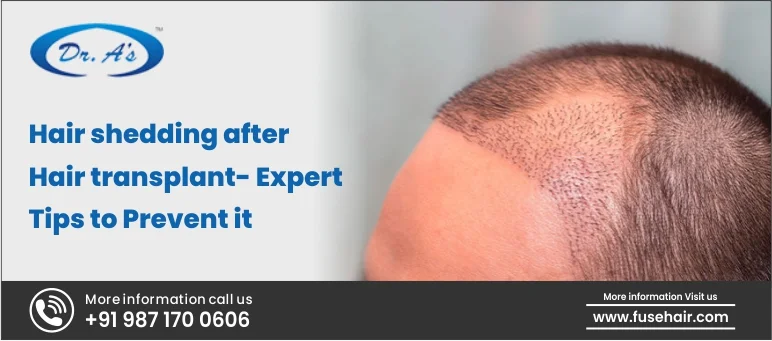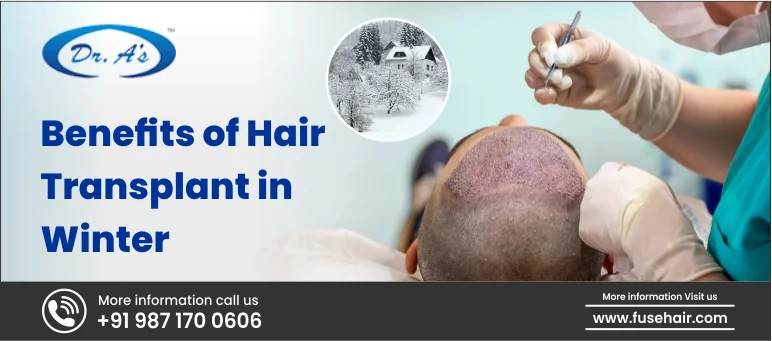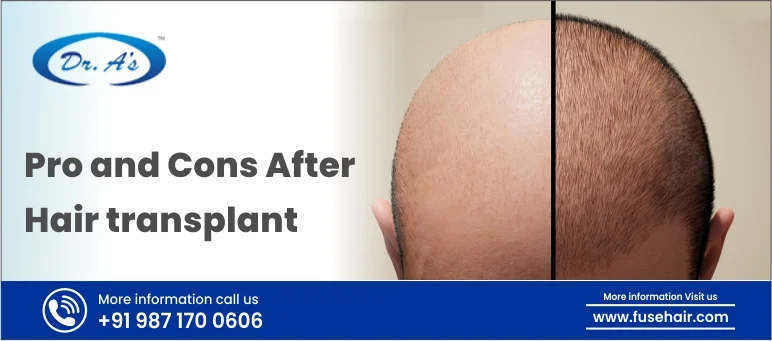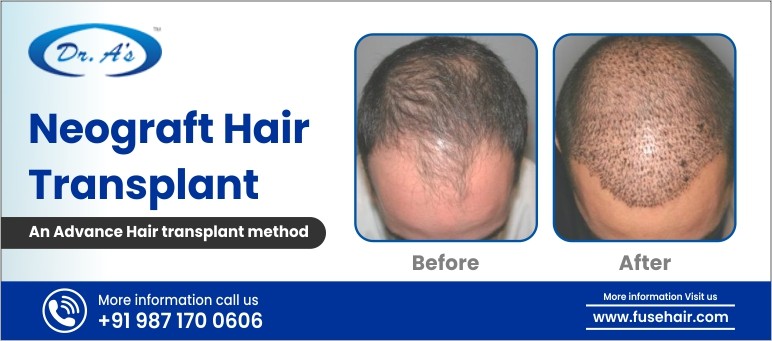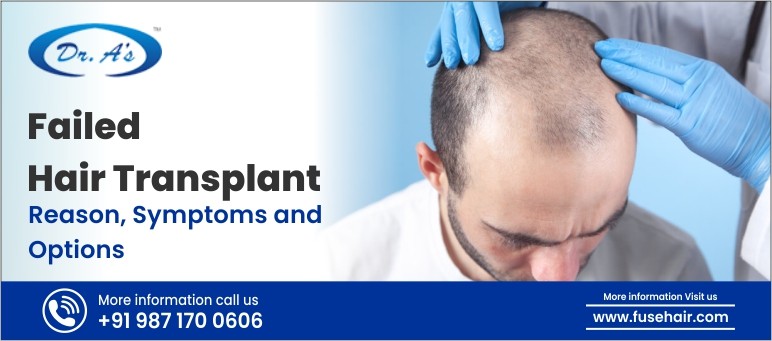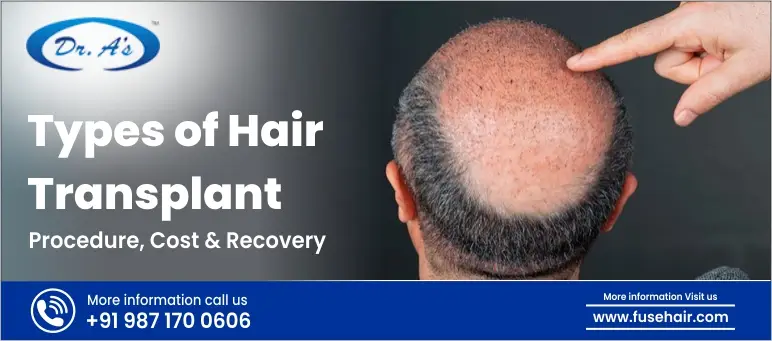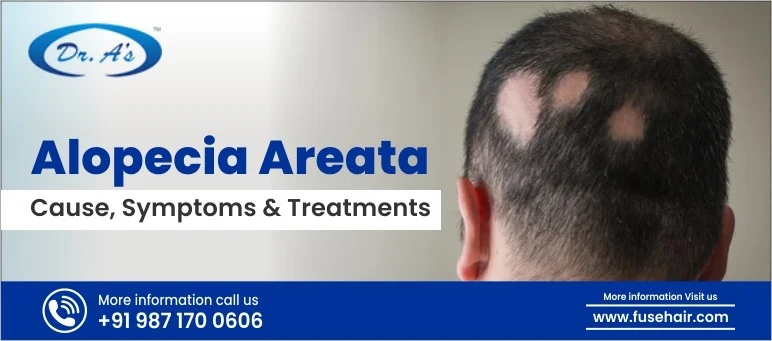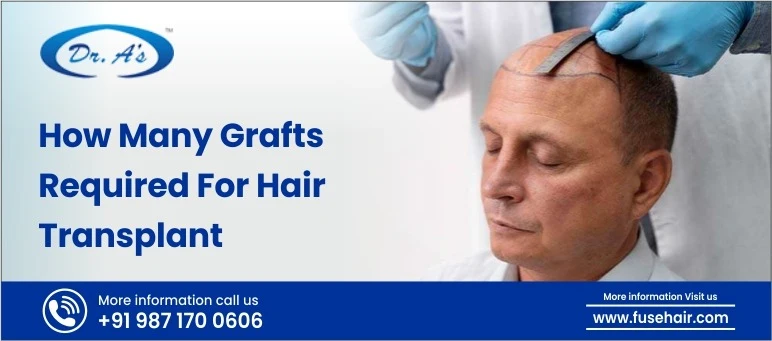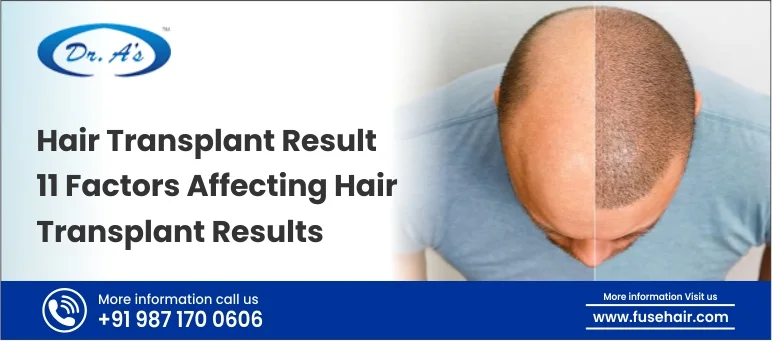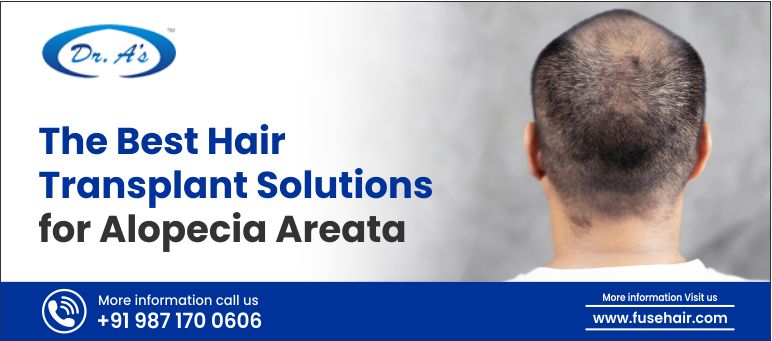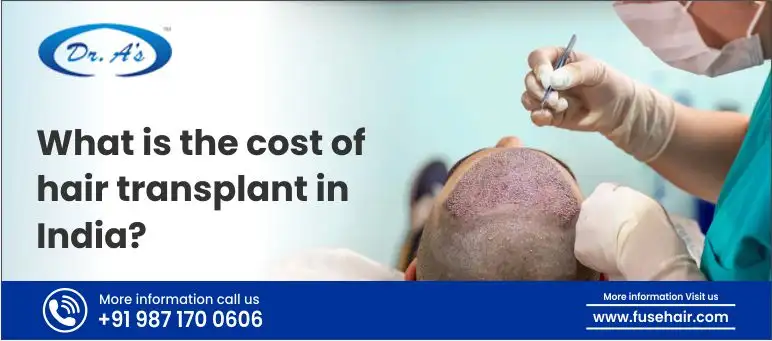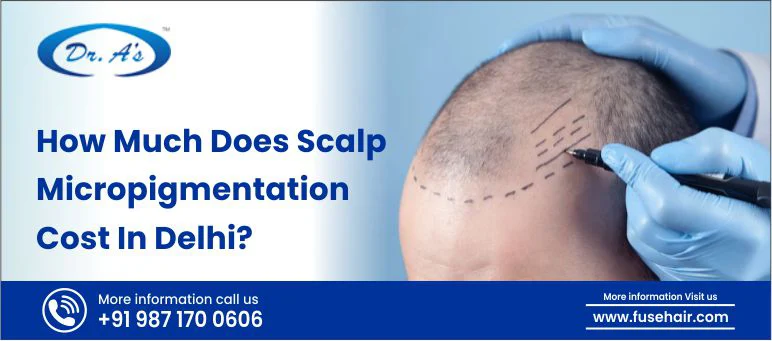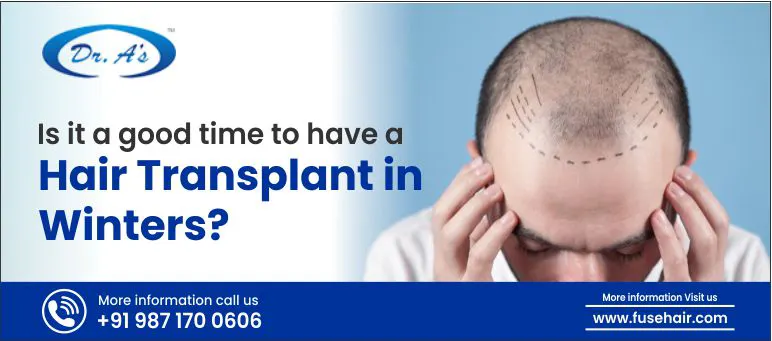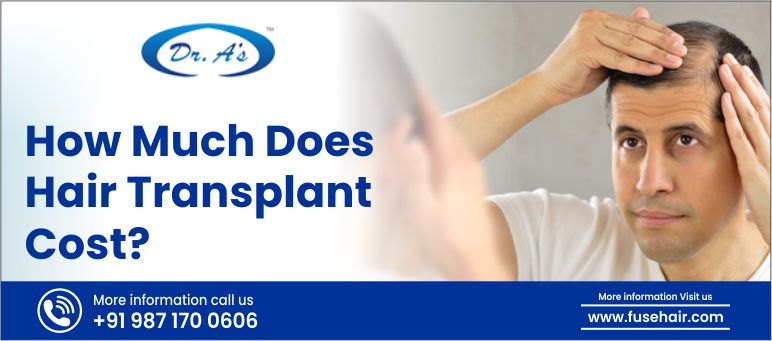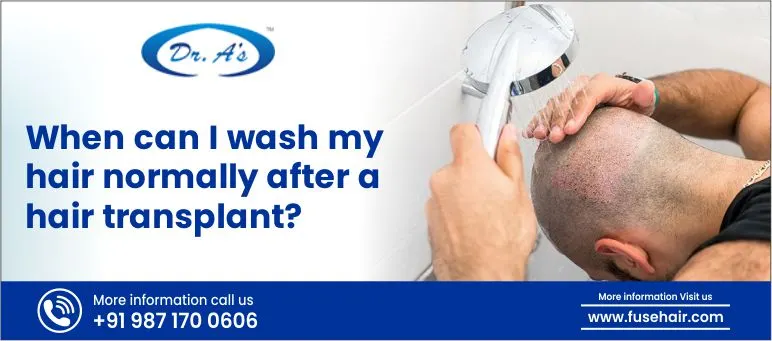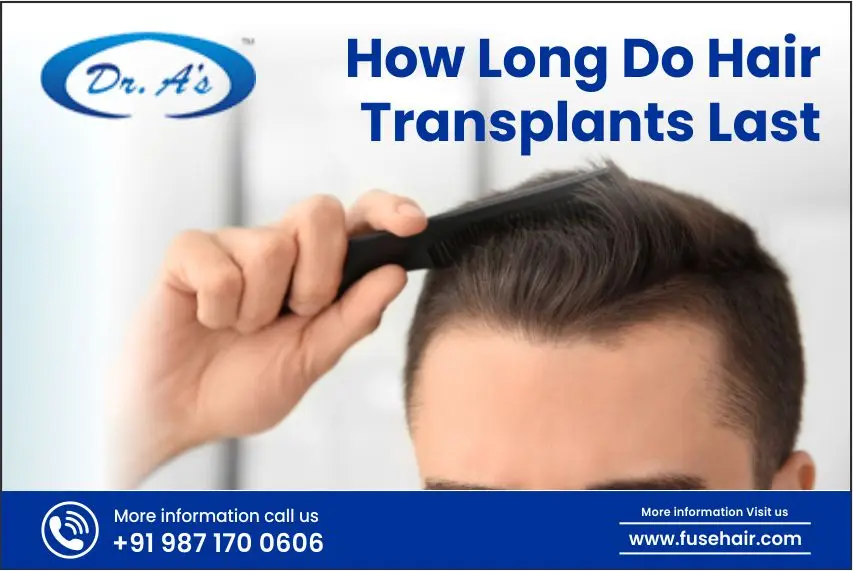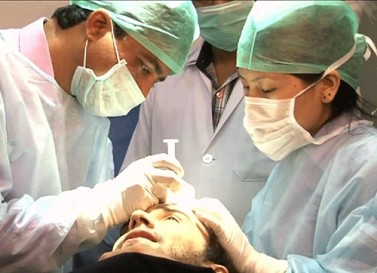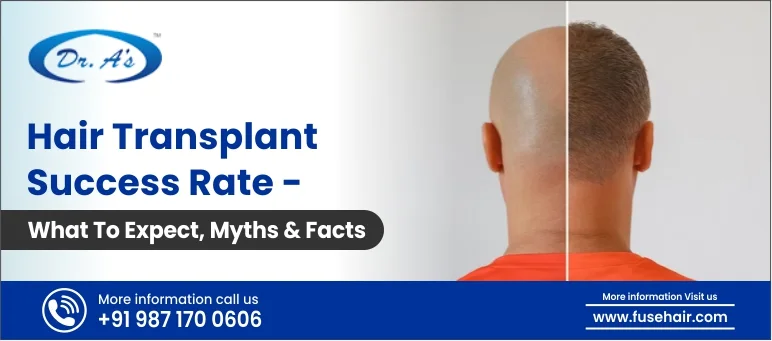
A hair transplant offers a path to regain youthfulness and beauty. However, the paramount concern lies in its success rate. The graft survival rate, a critical indicator, reveals that 90-95% of transplanted hair follicles thrive and endure. In essence, most transplanted hair flourishes, presenting a unique solution. The average hair transplant success rate in India is around 95-98% in men and 85-95% in females.
Hair Transplant Success Rate In India
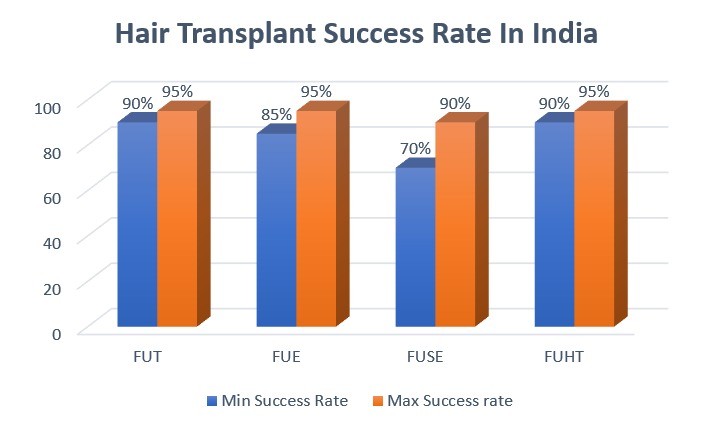
However, the exact number is influenced by key factors that tip the odds in your favor: meticulous planning, experienced and skilled surgeons, adherence to proper procedural techniques, and comprehensive consultations. These crucial elements ensure a higher likelihood of achieving desirable and lasting hair transplant results. By prioritizing these factors, individuals can confidently embark on their hair restoration journey, knowing that they have taken the necessary steps to maximize the success of their transplant.
This article explores different hair transplant techniques, dispels myths, and presents facts about success rates. Gain insights to set realistic expectations and make informed decisions.
What to Expect from Hair Transplant Surgeries?
Here we’ve discussed the most popular hair transplant surgeries and their success rates. Keep reading to learn what you can expect from each of these transplantation techniques.
FUT
In the Follicular Unit Transplantation (FUT) method, a strip of scalp from the donor area is surgically removed and divided into individual follicular units for transplantation. This technique is excellent for people who have experienced significant hair loss since it has several benefits, including the ability to transplant multiple grafts in a single session.
| Studies have shown that the FUT technique has a remarkable hair transplant success rate between 90% and 95%. This indicates that most transplanted hair follicles survive the surgery and continue to thrive. |
The success rate of Follicular Unit Transplantation (FUT) hair transplant can depend on several critical factors. Firstly, the skill and experience of the hair transplant surgeon performing the procedure play a significant role. A highly skilled surgeon with expertise in FUT techniques can significantly enhance the procedure’s success rate by ensuring precise graft extraction, dissection, and implantation.
Secondly, the characteristics of the donor area are crucial. The quality, density, and health of the hair in the donor area determine the availability of viable hair follicles for transplantation. Adequate donor supply is essential for achieving successful outcomes.
Additionally, proper handling and placement of grafts during the transplant procedure are vital. Careful graft manipulation and implantation techniques help to minimize graft damage and maximize their survival and growth.
Post-transplant care is equally important. The hair transplant cost is low, yet it benefits highly. Following the surgeon’s instructions for post-operative care, including medication protocols, protection of the transplanted area, and avoiding strenuous activities, promote optimal healing and graft survival. Lastly, individual patient characteristics, such as overall health, healing ability, and response to the transplant, can impact the success rate.
You can visit a reliable hair transplant clinic like Dr. A’s Clinic to undergo an effective FUT hair transplant. Dr. Arvind Poswal will perform a successful transplantation procedure and offer effective post-surgery guidelines for quick recovery.
FUE
Hair follicles are extracted individually from the donor area using a specialized device for the Follicular Unit Extraction (FUE) hair transplant procedure. This method has fewer drawbacks, such as little scarring and a shorter recovery time than previous treatments.
| Studies have shown that FUE hair transplant success rate in India is about 85% to 95%, which, in turn, indicates that FUE hair transplants generally have a reasonable success rate. This shows that many transplanted hair follicles successfully establish a root system and grow after the treatment. |
The success rate of a Follicular Unit Extraction (FUE) hair transplant might vary depending on several variables that influence positive results. First and foremost, the surgeon’s training and expertise are vital. The exact and delicate extraction of hair follicles can be ensured by a skilled surgeon with experience in FUE procedures, reducing damage and maximizing their survival throughout the transplanting process.
The features of the donor locale also influence the hair transplant success percentage. Good hair follicles are available for extraction depending on the hair’s quality and density in the donor location. The best results require a sufficient number of donors. Additionally, post-transplant care is essential. Successful graft survival and hair development are encouraged by adhering to the surgeon’s aftercare recommendations, which include correct wound care, medication use, and avoiding activities that can interfere with the healing process.
Patient-specific factors like general health, age, and natural hair qualities might also affect the success rate. Patients with solid hair follicles, decent general health, and reasonable expectations are likelier to succeed. Additionally, following the suggested schedule for follow-up appointments and consultations enables the surgeon to keep track of development and swiftly address any issues. The FUE hair transplant cost is affordable, too, making it a suitable option.
Patients can increase their chances of a successful FUE hair transplant, resulting in natural-looking hair restoration and increased self-confidence, by considering these considerations and choosing a qualified surgeon.
You can visit Dr. A’s Clinic to get the best treatment from the most renowned hair transplant surgeon, Dr. Arvind Poswal. He personalizes the FUE treatment for a higher success rate based on the analysis of your hair loss pattern and other health conditions. We ensure to offer low hair transplant costs yet with amazing results.
FUSE
It is possible to harvest and implant individual hair follicles utilizing the FUSE technique, which is short for “follicular unit separation extraction,” without needing a scalpel or stitches. Because treatment can use hair from any body region as a donor source, a FUSE hair transplant is sometimes called a body hair transplant.
However, the quantity and quality of the donor’s hair, the surgeon’s expertise and experience, the technique employed, clinical infrastructure, the patient’s profile, and the post-operative treatment regimen play a significant role in determining the FUSE hair transplant’s success rate. A FUSE hair transplant can reportedly attain an average survival rate of 85% to 90% for scalp hair and 70% to 80% for bodyhair transplant. However, specific outcomes may differ from case to case.
Precision and ability are needed for the FUSE procedure, which uses tiny punches to remove and implant individual hair follicles. The hair transplant success rate may be impacted by transaction or follicular damage. Hair properties like texture, color, curliness, and density also matter to get desired results.
The surgeon’s skills, experience, and access to the necessary infrastructure are essential for the surgery to produce natural results and endure a long time. Dr. Arvind Poswal is the pioneer of the stitchless FUSE transplant. Thus, he has expertise in this hair transplant technique and knows every nook and corner of this surgery to avoid risks and render natural-looking hair to the patients.
Besides, the age, gender, medical history, scalp condition, hair loss pattern, expectations, and patient compliance also affect the success rate of the FUSE hair transplant. For the best possible recovery and hair restoration, patients should have reasonable expectations, adhere to pre-and post-operative instructions, and have a sufficient donor supply and healthy scalp.
Proper post-operative care is crucial to avoid infections, inflammation, scarring, or shedding. Patients must follow instructions regarding cleaning, exposure to the sun, taking medications, and subsequent appointments.
Affirming the survival of transplanted follicles and maximizing patient satisfaction can be accomplished by considering these aspects.
FUHT
Follicular units, organic collections of hair follicles, are extracted from the patient and then implanted as part of the FUHT hair transplant procedure. This procedure seeks to restore hair density and create a natural hairline.
Studies have shown that FUHT hair transplants have excellent success rates, with graft survival rates between 90% and 95%. This shows that many transplanted follicular units survive and develop new hair growth.
A strip of healthy hair follicle-containing scalp is surgically taken from the donor location, which is commonly at the back of the head, during the FUHT treatment. Under a microscope, the donor strip is subsequently divided into individual follicular units.
Care following surgery is essential for excellent results. Usually, the surgeon will give the patient detailed instructions, such as properly caring for their wounds, taking their medications, and modifying their lifestyle. Following these recommendations can reduce difficulties and encourage optimum healing.
Before developing new hair, the transplanted hair follicles enter a resting stage known as telogen over time. It is crucial to remember that FUHT may take several months to have its full effects, with noticeable hair growth usually becoming apparent 6 to 12 months following the surgery.
The success rate of FUHT can vary depending on several critical variables. First and foremost, the surgeon doing the treatment matters a lot regarding skill and experience. An experienced surgeon with knowledge of FUHT procedures can guarantee accurate follicular unit extraction and transplanting, maximizing their survival and encouraging effective hair growth.
So, visit one of the best hair transplant clinics like Dr. A’s Clinic, where Dr. Arvind Poswal, the best hair transplant surgeon in Delhi, can help you with all your pre- and post-operation queries.
Additionally important are the features of the donor area. The amount of viable grafts for transplantation depends on the density, nature, and condition of the hair follicles in the donor location. A sufficient donor supply is necessary to get the desired effects.
For FUHT to be successful, post-operative care must be done correctly. Following the surgeon’s recommendations for wound care, pharmaceutical use, and lifestyle changes can significantly impact the recovery and survival of transplanted follicles.
The hair transplant success rate might be affected by patient variables such as general health, age, and personal response to the transplant. The patient’s expectations and the degree and pattern of hair loss should also be considered.
It’s crucial to schedule regular follow-up appointments with the surgeon for evaluation and progress monitoring to resolve any issues and guarantee the best results.
People can increase the success rate of FUHT and get excellent and natural-looking outcomes in hair restoration by considering these things and choosing a trained surgeon like Dr. Arvind Poswal.
Top 3 Myths and Facts Related to Hair Transplantation
There exist many myths related to hair transplant clinics, hair transplant surgeries, and hair transplant costs. So, today we will debunk all these myths and uphold the truths before you.
#Myth 1: Hair Transplants Have a Low Success Rate and Only Work for Some People
Fact: It is a popular misconception that hair transplants are unsuccessful for most people and do not work. However, this needs to be supported by the data or by the experiences of many people who have had successful hair transplants. In fact, for many people, hair transplants have shown to be incredibly successful in correcting hair loss and restoring natural hair growth.
With improvements in surgical methods, equipment, and knowledge, hair transplant procedures like Follicular Unit Extraction (FUE) and Follicular Unit Transplantation (FUT) have changed dramatically. These developments have helped success rates and results to improve.
The success of hair transplants has been shown in numerous studies and clinical reports. Although success rates can vary, it is generally acknowledged that most transplanted hair follicles can thrive and grow in their new site.
Also, finding trustable hair transplant clinics which can offer low hair transplant cost yet render the best results adds to the success rate of the treatment. The graft survival percentage after a hair transplant ranges from 90% to 95%, indicating a high level of success.
#Myth 2: Hair Transplants are a One-Time Procedure that Can Restore a Full Head of Hair
Fact: The idea that a full head of hair can be restored with a single hair transplant is a misconception. Although hair transplant methods can significantly increase hair density and coverage, it’s crucial to have reasonable expectations and be aware of the procedure’s limitations.
Hair follicles from a donor area are removed during hair transplantation and then transplanted to balding areas of the scalp. In their new location, these transplanted follicles continue to grow hair. It is important to remember that donor’s hair is scarce and that only a certain quantity of grafts can be obtained. Because of this, a hair transplant’s coverage, particularly in women, may not result in a complete head of hair.
To obtain the necessary coverage and density, people with significant hair loss or substantial regions of baldness may need numerous hair transplant sessions. The process of restoring hair is frequently approached, with several sessions spread over months or years.
Additionally, hair loss can be progressive, meaning that people may eventually continue to lose more hair in regions where it hasn’t been transplanted. As a result, continuous maintenance and possible future treatments to address any new regions of hair loss may be necessary to correct any disparity between the transplanted and native hair.
Individual differences can affect a hair transplant’s success and durability. The outcome may vary depending on the kind and composition of the donor hair, the patient’s general health, and how they react to the surgery. While some people may have more consistent results, others may have more varied graft survival and hair growth rates.
# Myth 3: You Lose Too Much Blood During the Procedure
Fact: It’s a prevalent misconception that a hair transplant causes excessive blood loss. The quantity of blood loss during hair transplant treatments is little and under control, making them safe and less intrusive.
During a hair transplant, local anesthetic is applied to the scalp to numb the area and ensure the patient is comfortable throughout the treatment. Next, the surgeon uses follicular unit extraction (FUE) or follicular unit transplantation (FUT) procedures to delicately remove hair follicles from the donor area, typically from the scalp’s back or sides. While a strip of scalp is physically removed and divided into smaller grafts in FUT, small punches are utilized in FUE to remove individual hair follicles.
The surgeon and their team use methods and tools to control bleeding throughout the procedure efficiently. These include the use of pressure and, if necessary, the injection of hemostatic drugs to manage any potential mild bleeding, as well as the use of specialist equipment for graft extraction and implantation.
The number of grafts harvested during a hair transplant is typically tailored to the individual’s specific needs and available donor supply. This ensures the procedure is optimized for the patient’s desired outcome while minimizing unnecessary trauma or excessive blood loss.
Conclusion
Hair fall and hair loss issues have become very common nowadays. Thus, many state-of-the-art hair transplant techniques have been developed to help people restore their lost hair and boost self-confidence. The ones with a high hair transplant success rate in India are FUE, FUT, FUHT, and FUSE. However, it is essential to consult an expert hair transplant surgeon to know which surgery will have the best possible results for your hair loss condition.
You can visit Dr. A’s Clinic, a leading hair transplant clinic in India, offering effective and affordable hair transplantation services. Under the supervision of Dr. Arvind Poswal, you can expect to get the best solution to your hair loss-related issues here. So, book a consultation with Dr. Arvind Poswal today!
Frequently Asked Questions
1. What is the average success rate of a hair transplant procedure?
The average success rate of a hair transplant procedure is generally high, ranging from 90% to 95%. This means most transplanted hair follicles will survive and grow in their new location. However, it is essential to note that individual results may vary depending on various factors, such as the surgeon’s skill, patient characteristics, and post-operative care.
2. Can the success rate of a hair transplant be guaranteed?
While hair transplant procedures have a high success rate, it is essential to understand that no medical procedure can guarantee 100% success. The patient’s response, hair characteristics, and overall health can influence the outcome. Choosing a qualified and experienced surgeon and following post-operative instructions can significantly enhance the chances of a successful outcome.
3. Does the success rate vary based on the hair transplant technique?
The success rate can vary based on the hair transplant technique used. FUE (Follicular Unit Extraction) and FUT (Follicular Unit Transplantation) are the most common techniques. Both techniques can yield a high hair transplant success rate in India when performed by a skilled surgeon like Dr. Arvind Poswal. The choice of technique may depend on factors such as the patient’s hair characteristics, donor supply, and individual goals.
4. Can a hair transplant fail or result in poor outcomes?
While rare, a hair transplant may not meet the patient’s expectations or result in poor outcomes. Factors contributing to a less favorable outcome include inadequate donor supply, improper surgical technique, poor post-operative care, or underlying health issues. Choosing a reputable surgeon and hair transplant clinic and having realistic expectations based on individual factors and consultations is crucial.
5. What factors can affect the success rate of a hair transplant?
Several factors can influence the hair transplant success rate. These include the surgeon’s expertise and skill, the characteristics of the donor and recipient hair, the patient’s overall health and individual response, and adherence to post-operative care instructions. Factors such as the extent and pattern of hair loss, age, and patient expectations can also impact the outcome. A thorough consultation with a qualified surgeon can help assess these factors and provide personalized insights regarding the success rate and potential outcomes.


















